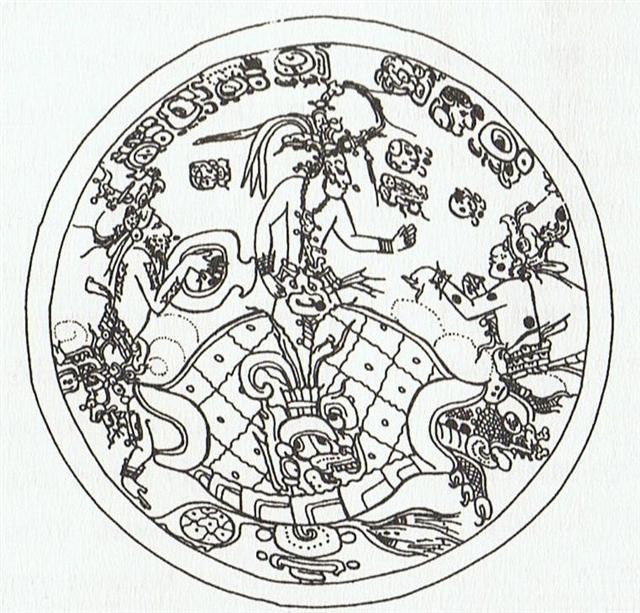Moon
will then begin to shine after a double-month in
complete darkness (58 nights). Moon arrives at the
beginning of side a. According to her map 118 nights
is equivalent to glyph number 354 (counted from
Ha1-1). Two lunar double-months with 3 glyphs per
night will reach to glyph number 3 * 118 = 6
* 59 =
12 * 29.5 = 354:
 |
 |
 |
348 |
 |
 |
 |
|
Ha1-1 |
Ha1-2 |
Ha1-3 |
Ha7-8 |
Ha7-9 |
Ha7-10 (354) |
|
354 / 3 = 118 = 4 * 29.5 |
The
type of henua in Ha7-10 is of the kind which appears
immediately after midnight according to Tahua,
which probably means that a new 'day' is born also at Ha7-10:
A
slight adjustment is needed for the parallel to be
exact - viz. adding 1 in order to locate Ha7-10 at
position 355 ('one more' than the completed 4 lunar
months cycle. The last glyph on side b is, however,
missing. It should be added that 355 / 5 = 71 may
allude to 7-10.
Sun
arrives for real on the stage at the beginning of day 119
(counted from Ha1-1). But a more meaningful number
is reached by counting from the dark
mago
at Hb9-63:
|
A
sun child (tamaiti) comes after
half a year: |
 |
 |
 |
212 |
 |
 |
 |
|
Ha7-11 |
Ha7-12 (356) |
Ha7-13 |
Hb7-38 |
Hb7-39 |
Hb7-40 (996) |
|
119 + 58 = 177 = 6 * 29.5 |
390 (winter solstice) |
 |
 |
 |
40 |
 |
 |
 |
|
Hb7-41 |
Hb7-42 |
Hb7-43 (999) |
Hb9-60 |
Hb9-61 |
Hb9-62 (1122) |
|
day 1 beyond winter solstice |
42 |
|
8 * 32 = 256 is subdivided by winter
solstice into 214 + 42 days. |
Tamaiti at 7-13 probably alludes to the kuhane
station Tama where another sun child is born. Tama is defined by 14 *
29.5 = 413, and we can count 3 * 413
- 357 (at Ha7-13) = 882 glyphs = 294 days =
42
weeks. 7 * 52 = 364 and 7 * 42 = 294, both numbers
ending with 4 (cfr 354), as if to say that 4 should
be the last digit. There are numerous numerical clues,
too many
for comfort. But 42 apparently often indicates the
end, e.g. in Aa1-42
(cfr above).
Glyphs are more reliable. The twin pair in Ha7-12 is
really only one individual - there is no real break in time when
sun moves from the 1st half of the year to the 2nd.
On the other hand, in the
first night of the calendar cycle this twin is
only imaginary (the outline is not closed). Neither
moon nor sun is present at this initial stage, only
the black mago is there:
 |
 |
 |
|
Hb9-63 |
Hb9-64 |
Hb9-65 |
|
day 1 of the
calendar cycle |












